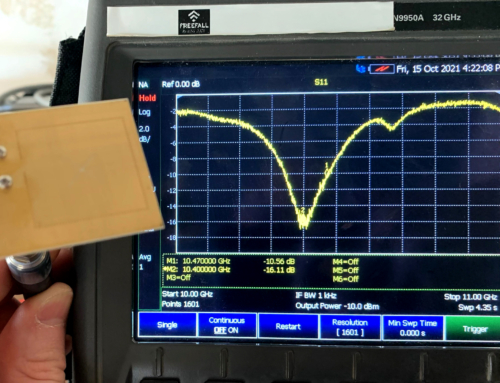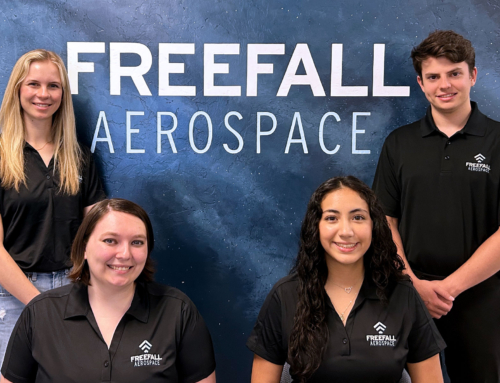FreeFall Aerospace’s Phased Array: An Antenna Like No Other
Gottleib’s Satellite Mobility World | Feb 2021
The quest to develop a low-cost electronically steerable antenna (ESA) has been an elusive one. Despite hundreds of millions of dollars invested by over a dozen companies, a viable, low-cost antenna has yet to emerge. For years, satellite industry engineers have battled the laws of physics, power consumption, heat, and cost in their struggle to build the ultimate antenna. They have employed PCBs impregnated with thousands of chips, and metamaterial designs – all resulting in high-cost solutions. We at Satellite Mobility World are pleased to present a unique and simple solution to the challenge, the FreeFall Aerospace spherical antenna. To find out more about this unusual antenna, we met with CEO, Doug Stetson.
SMW: Can you tell us about the origins of FreeFall Aerospace?

Doug Stetson, CEO of FreeFall Aerospace
Doug Stetson: Tucson, Arizona based FreeFall Aerospace and its antenna are the products of Space exploration programs. The inventor of our unique technology, Dr.Chris Walker, is a Radio Astronomer. My background is an expansive career at the Jet Propulsion Laboratory, working on such bold Space exploratory programs as Cassini, Galileo, and Mars exploration. We can find the origins of the FreeFall antenna in derivations of Chris Walker’s signal detector technology. Although developed for Radio Astronomy, we realized that it had enormous potential when applied to satellite communication. So, in late 2016 we incorporated FreeFall to develop and commercialize the technology.
SMW: FreeFall’s antenna incorporates a spherical rather than parabolic reflector – a design rarely seen in the satellite industry. What advantages does it have over conventional parabolic and phased arrays?
Doug Stetson: Most high-gain satellite antennas are parabolic dishes or flat panel phased arrays. Instead, the FreeFall antenna uses a spherical reflecting surface. Unlike a parabolic antenna, which has a very narrow field of view and must be precisely pointed to achieve high-gain, a spherical reflector has the widest possible field of view, dramatically simplifying the acquisition and tracking of a satellite or ground station. A characteristic of a spherical reflector is that it focuses energy on a focal line rather than a focal point as in a parabolic antenna. The Arecibo Radio Telescope is the prime example, and in that case, beam steering was accomplished by physically moving the feed along a semi-circular track. That said complex mechanical process, and if you can avoid it, there’s a tremendous saving in mass, power, and operational complexity for both Space-borne and ground-based antennas. That’s innovation.
Instead of physically moving the line feed, we do it electronically. We have developed a phased array line feed that allows us to provide wide-area coverage at high-gain without requiring any physical motion of the antenna and without moving parts. Our All-Sky antenna offers the beam-steering capability of a flat panel phased array, the high-gain of a parabolic dish, without the complexity, high power, and high cost of an electronically steered flat panel phased array. The antenna has all the advantages of an ESA except for flatness, and it’s simple to build and inexpensive to manufacture.
Read the entire article here beginning on page 23.
About Satellite Mobility World
Gottlieb International Group’s monthly on-line publication, “Satellite Mobility World” is focused on the use of satellite communications in maritime and aero markets.





Leave A Comment